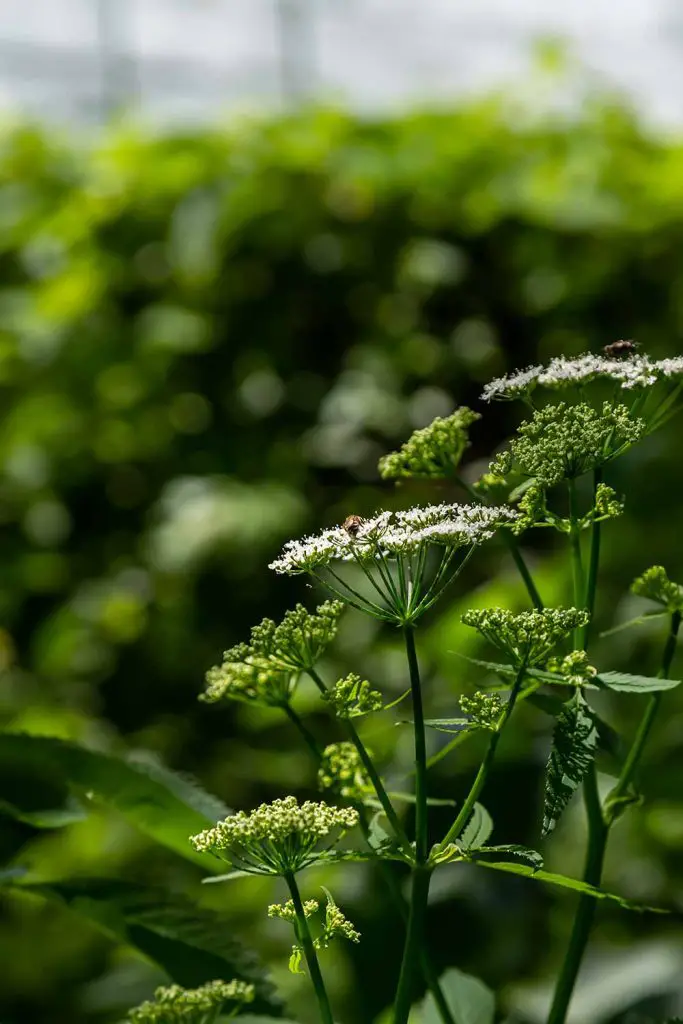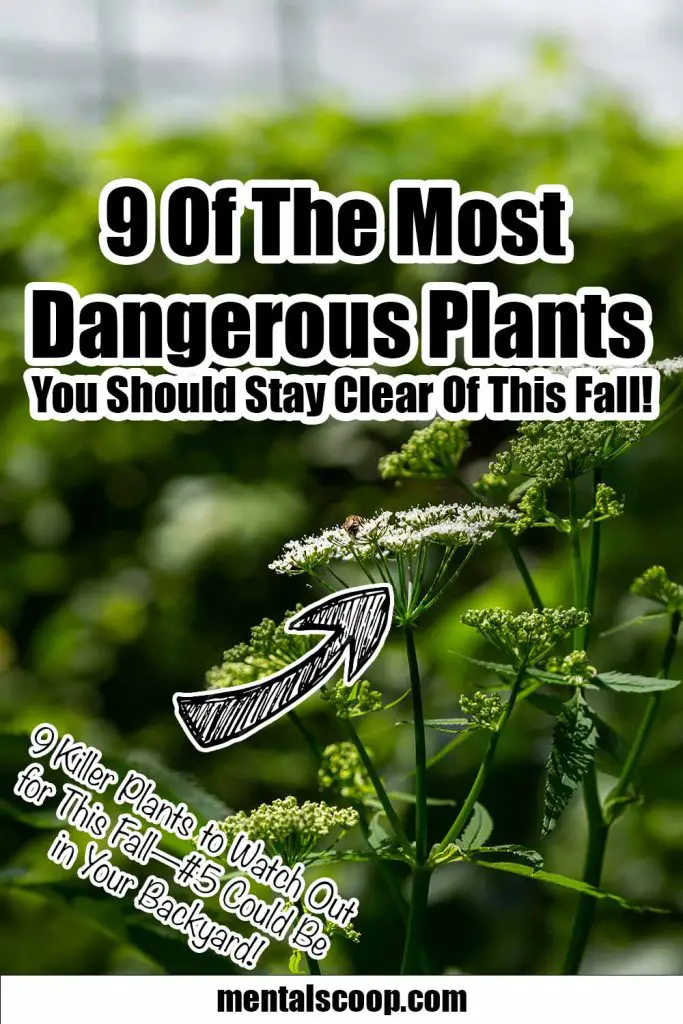9 Of The Most Dangerous Plants You Should Stay Clear Of This Fall!

As the crisp air of fall starts to sweep in and the leaves turn golden, it’s easy to get swept up in the beauty of nature. Fall hikes, garden strolls, and outdoor adventures are all about soaking in the season’s stunning scenery. But, amidst the vibrant foliage and serene landscapes lurk plants that are more than just pretty to look at. Some are so dangerous that they can cause everything from skin irritations to serious health problems—and in extreme cases, even death.
While nature is undeniably beautiful, it’s also unpredictable. Knowing which plants to avoid this fall can keep your seasonal excursions safe. Whether you’re a curious gardener, a hiker, or a pet owner, these 9 dangerous plants are ones you should stay clear of this fall.
1. Poison Ivy (Toxicodendron radicans)
If there’s one plant that gives outdoor enthusiasts the shivers, it’s poison ivy. This notorious plant can be found in forests, along hiking trails, and even in backyards. Poison ivy is a master of disguise in the fall, blending in with the changing colors of the season.
What makes it dangerous?
All parts of poison ivy—leaves, stems, and roots—contain urushiol, an oily compound that causes severe allergic reactions in most people. Even contact with its dead leaves or branches can lead to itchy, blistering rashes that may spread across the body if not treated promptly.
How to avoid it:
Learn to identify poison ivy’s signature three-leaf clusters, and wear protective clothing if venturing into areas where it’s common. A helpful rhyme to remember: “Leaves of three, let it be.”
2. Deadly Nightshade (Atropa belladonna)
Also known as belladonna, deadly nightshade has a haunting reputation for good reason. It’s one of the most toxic plants in the world and can be found in various regions during the fall season.
What makes it dangerous?
This plant contains atropine and scopolamine, both of which can cause hallucinations, seizures, and death if ingested. Its small, shiny black berries can be especially tempting to children or animals, but even a small dose can be lethal.
How to avoid it:
Stay alert if you come across its purplish bell-shaped flowers or its dark berries, and never touch or ingest any part of the plant.
3. Giant Hogweed (Heracleum mantegazzianum)
Giant hogweed is a towering menace. Although more commonly seen in summer, its large, umbrella-shaped flowers and jagged leaves can still pose a threat well into fall.
What makes it dangerous?
The sap from giant hogweed contains chemicals that, when exposed to sunlight, can cause severe burns, blisters, and scarring. The damage can last for years, and in some cases, even temporary or permanent blindness can occur if the sap gets into the eyes.
How to avoid it:
Giant hogweed can grow up to 14 feet tall, making it relatively easy to spot. Avoid any contact with the plant and report sightings to local authorities, as it’s considered an invasive species in many areas.
4. Oleander (Nerium oleander)
Often admired for its clusters of beautiful, bright flowers, oleander is frequently found in parks and gardens. However, its beauty masks a deadly secret.
What makes it dangerous?
All parts of the oleander plant—flowers, leaves, stems, and roots—are highly toxic if ingested. Even the smoke from burning oleander can be poisonous. Ingesting even a small amount can lead to nausea, vomiting, irregular heartbeat, and in severe cases, death.
How to avoid it:
Avoid planting oleander in gardens, especially if you have pets or young children. If you do come into contact with the plant, wash your hands thoroughly and never ingest any part of it.
5. Water Hemlock (Cicuta douglasii)
Known as one of the most poisonous plants in North America, water hemlock often grows near marshy areas and wetlands, places that become even more enticing to hikers and explorers during the fall.
What makes it dangerous?
Water hemlock contains cicutoxin, a compound that causes violent seizures, respiratory failure, and can lead to death within hours if ingested. Its white flowers resemble those of harmless plants, making it tricky to identify.
How to avoid it:
Familiarize yourself with its unique features—clusters of small white flowers and long, serrated leaves—and steer clear of any unknown plants in wetland areas.
6. Foxglove (Digitalis purpurea)
Foxglove’s tall spikes of vibrant purple, pink, or white flowers can brighten up any garden, but this lovely plant holds a sinister secret.
What makes it dangerous?
Foxglove contains cardiac glycosides, chemicals that can disrupt heart function, leading to arrhythmias, nausea, dizziness, and even death. Even brushing against the plant can cause mild skin irritation for some people.
How to avoid it:
If you have foxglove in your garden, handle it with care and wear gloves when tending to it. Don’t allow children or pets to play near it, and ensure that it’s kept out of reach from animals prone to chewing on plants.
7. Jimsonweed (Datura stramonium)
Jimsonweed, also called thorn apple or devil’s snare, grows in disturbed soils and is often found along roadsides or in fields. Its spiny seed pods are as striking as they are dangerous.
What makes it dangerous?
All parts of jimsonweed contain toxic alkaloids such as atropine and scopolamine, which can cause hallucinations, hyperthermia, seizures, and even death when consumed in high quantities.
How to avoid it:
While its thorny pods and large white or purple flowers are eye-catching, avoid touching or harvesting this plant. If you spot it, keep pets and children far away.
8. White Snakeroot (Ageratina altissima)
White snakeroot is often found growing in wooded areas or along the edges of fields. It produces small, white flowers that bloom in late summer and fall, making it a common sight as the season progresses.
What makes it dangerous?
White snakeroot contains tremetol, a toxin that can cause “milk sickness” if consumed by livestock and passed on to humans through dairy products. Symptoms of poisoning include vomiting, tremors, and eventually death if not treated.
How to avoid it:
If you come across this plant in the wild, don’t touch or disturb it. Farmers should ensure that livestock avoid areas where white snakeroot is growing.
9. Autumn Crocus (Colchicum autumnale)
As its name suggests, the autumn crocus is a fall-blooming plant, often appearing in gardens with its striking pink, purple, or white flowers. However, its beauty can be deceiving.
What makes it dangerous?
The autumn crocus contains colchicine, a toxin that can cause severe gastrointestinal distress, organ failure, and death if ingested. Unlike some other plants, even a small dose can be fatal.
How to avoid it:
Avoid planting autumn crocuses if you have small children or pets. If you do handle the plant, use gloves and wash your hands thoroughly afterward.
Nature is full of wonders, but it’s also filled with hidden dangers. These 9 dangerous plants can pose serious health risks, whether you’re out hiking in the woods, gardening in your backyard, or simply enjoying the fall scenery.
Being aware of their characteristics and knowing how to avoid them will help keep you safe as you enjoy the beauty of fall.
So the next time you’re out and about, take a moment to look closely before touching any plants, especially those that seem unfamiliar. After all, staying safe is the best way to fully appreciate the splendor of the season!

More interesting articles you may be interested in reading:

